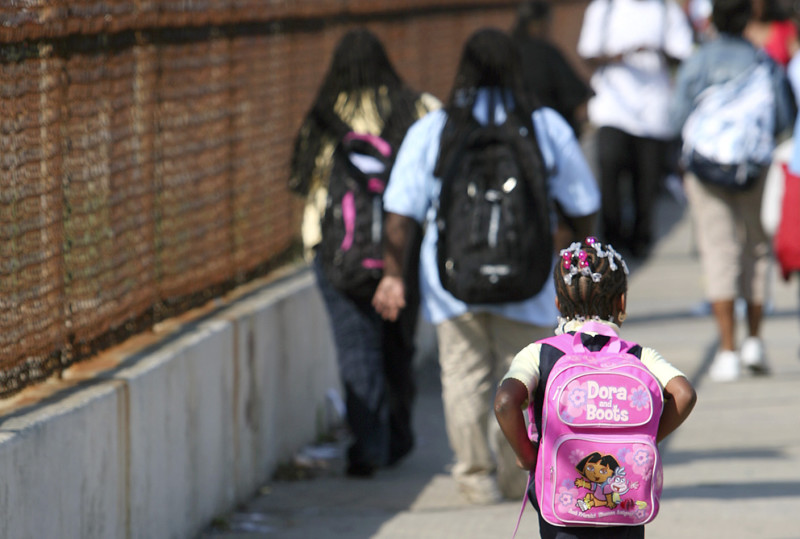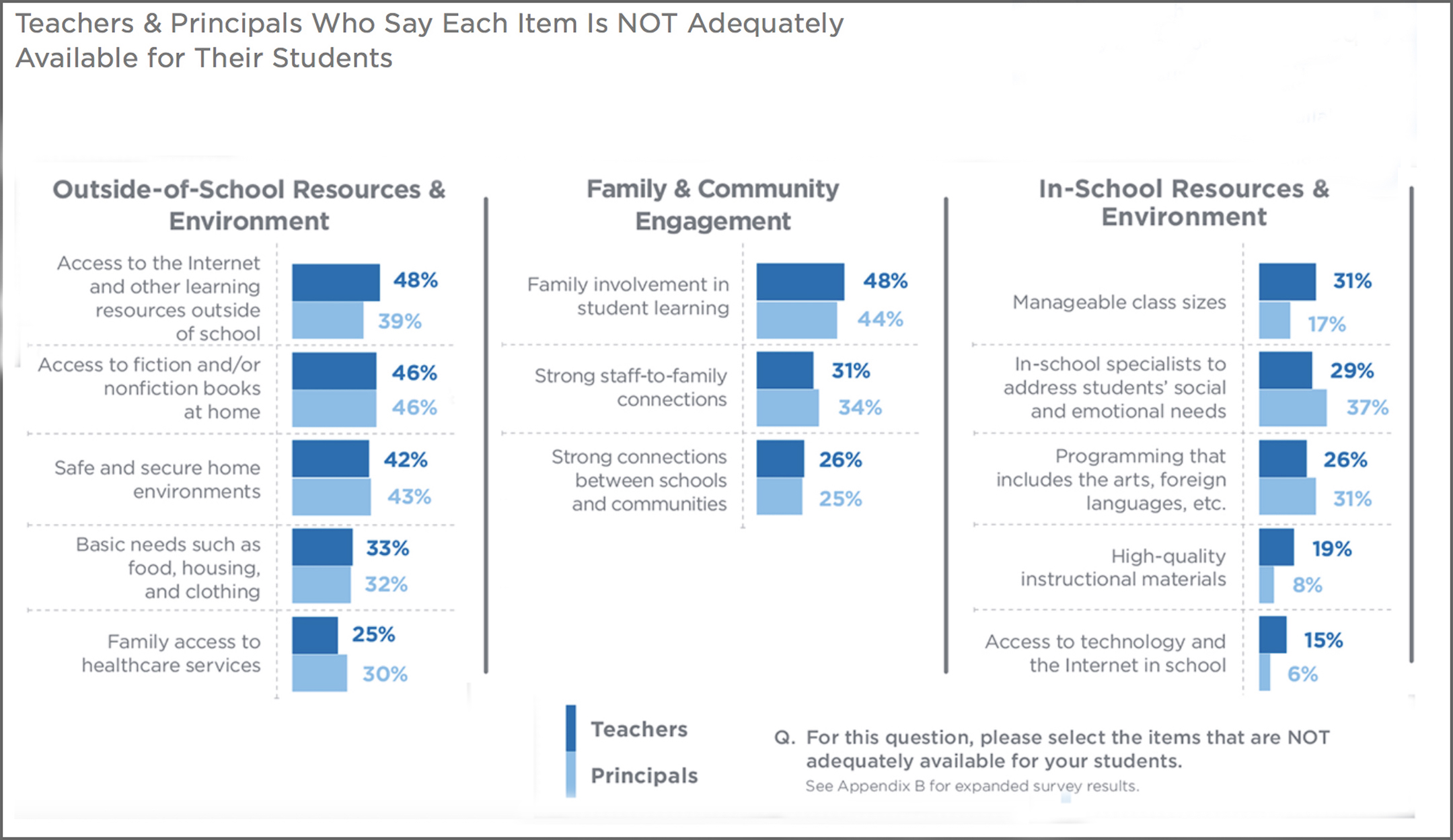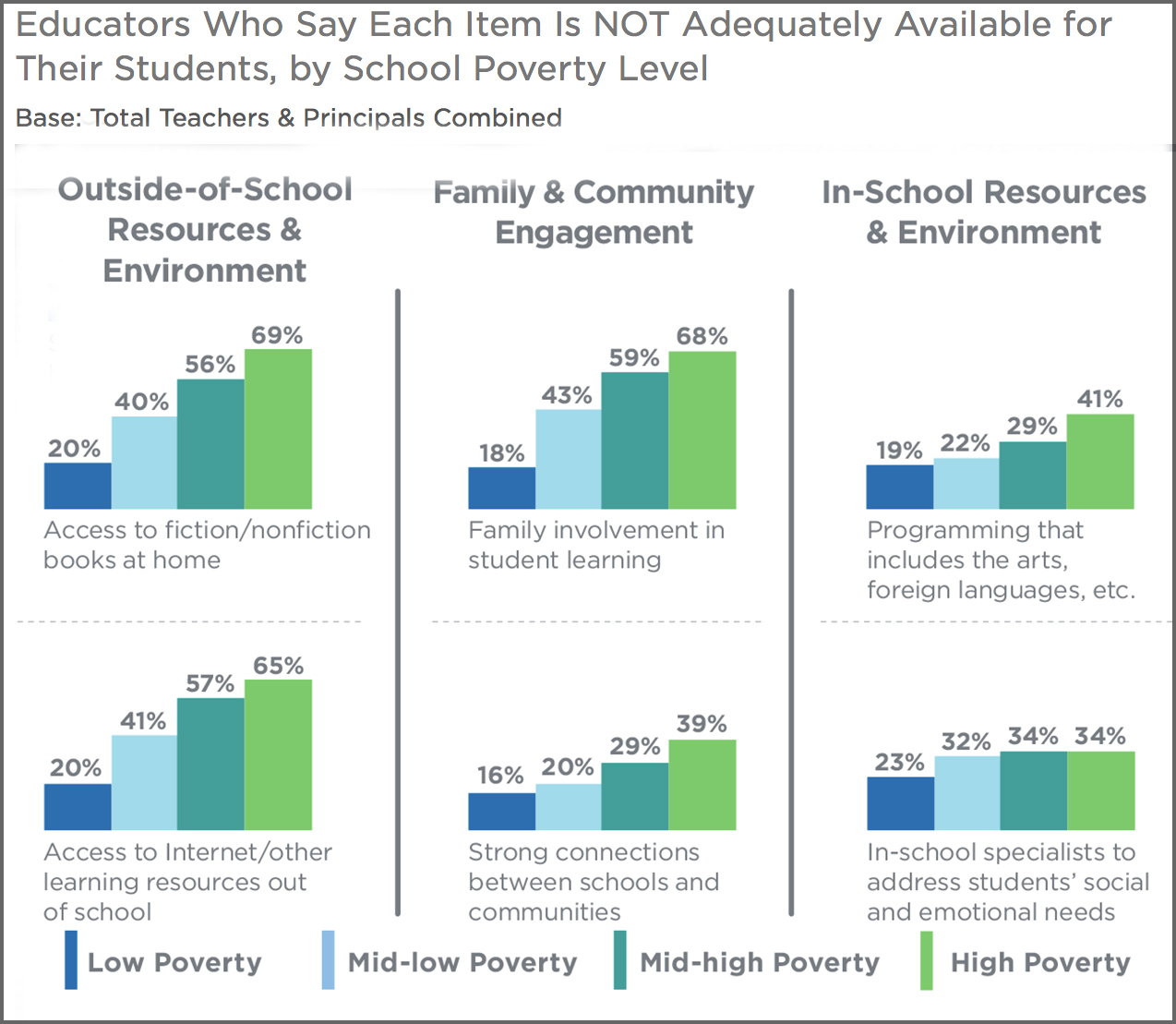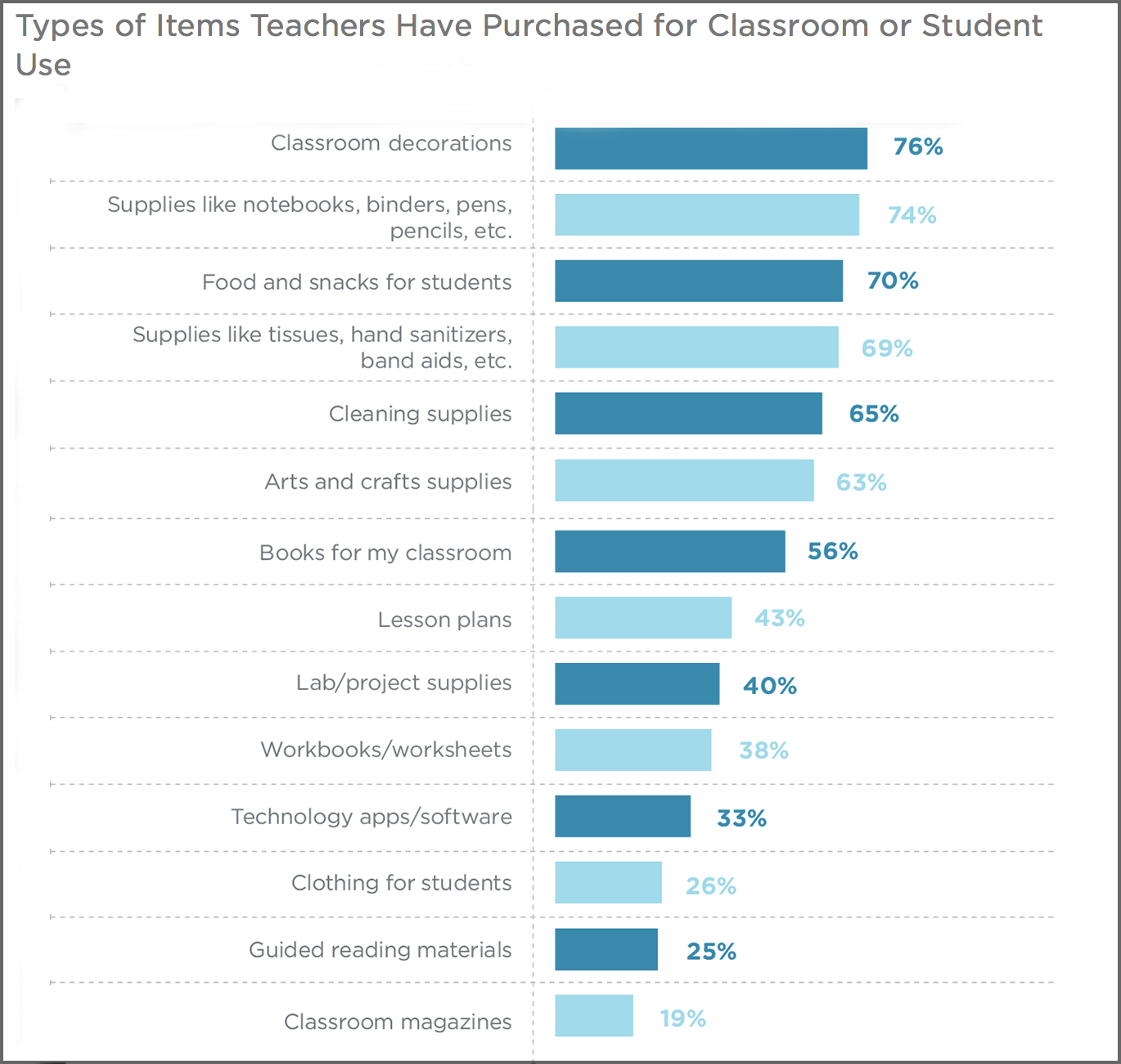 There is an overwhelming consensus among public school educators that equity in education - access to the resources and opportunities that every student needs for success - should be a national priority, according to new survey by Scholastic. Ninety-seven percent of teachers and 98% of principals agree that more needs to be done to meet this urgent need. By equally significant numbers, however, educators report that obstacles exist in and outside of school, often regardless of poverty level.
There is an overwhelming consensus among public school educators that equity in education - access to the resources and opportunities that every student needs for success - should be a national priority, according to new survey by Scholastic. Ninety-seven percent of teachers and 98% of principals agree that more needs to be done to meet this urgent need. By equally significant numbers, however, educators report that obstacles exist in and outside of school, often regardless of poverty level.
"Educators are telling us that children are arriving at school in need of mental health services, living in poverty, or experiencing personal crisis - all conditions that create barriers to learning," said Michael Haggen, Chief Academic Officer of Scholastic Education. The report is the result of a nationwide survey of 4,700 public school teachers and principals, conducted by Scholastic and YouGov and summarized in the Teacher and Principal School Report: Equity in Education.
"The report also shows us educators' belief that given the right resources, including high-quality instructional materials, community and family partners, and professional development, they can provide a quality education for every young person who walks through their doors," Haggen added.
The Scholastic survey results are collected under four main categories: Barriers to Equity, Families and Communities, Educators' Funding, and Educators' Commitment. You can read the entire report here. In the meantime, here are a few highlights.
Outside Barriers to Learning Are Prevalent Across Poverty Levels
Eighty-seven percent of educators (teachers and principals) say many of their students face obstacles to learning that come from outside the school environment, and only 39% agree that most of their students start the year ready to perform grade-level work.
Not surprisingly, responses largely depended on where educators are employed. But even at low-poverty schools, 66% of both teachers and principals agreed or strongly agreed that outside factors - family crises, poverty, mental health challenges, lack of English language learning support - disrupt their students' learning. At high-poverty schools, that number rises to 98%.
What Resources Are Not Adequately Available? Almost Everything
According to the Scholastic survey, high numbers of educators report that many of the resources necessary for student success are in short supply. While they point to a scarcity of school resources, critical resources outside the school are even less accessible to many students.
 Teacher & Principal School Report (Scholastic, 2016)
Teacher & Principal School Report (Scholastic, 2016)
As school poverty increases, those resource disparities become more acute.
 Teacher & Principal School Report (Scholastic, 2016)
Teacher & Principal School Report (Scholastic, 2016)
Year-Round Access to Books is Critical
According to the survey, the largest resource disparity based on school poverty level is access to fiction and non-fiction books at home. Sixty-nine percent of educators in high-poverty schools, compared to 20% in low-poverty schools, say these materials are not adequately available at home.
Ninety-six percent of teachers and principals agreed/strongly agreed that providing year-round access to books at home is important, and similar numbers believe that schools have an important role to play in expanding this access.
Retaining High-Quality Teachers Remains a Top Challenge
Take Action
The Every Student Succeeds Act helps ensure opportunity for all students regardless of ZIP code - if you get involved in how it is implemented in your state. Learn how you can help ESSA live up to its promise by visiting GetESSARight.org.
Overall, 49% of teachers and principals say keeping good teachers in the classroom is difficult, a problem more likely to be seen in high-poverty schools, where 48% have fewer than 10 years experience. In low-poverty schools, only 31% of teachers have less than 10 years in the classroom, while 25% have more than 20 years (only 17% in high-poverty schools).
Teachers Spend $530 of Their Own Money to Help Students Succeed
When it comes to the top five funding priorities, teachers scross school poverty levels are in general agreement. Topping the list is reducing the student-to-teacher ratio (55%) and purchasing high-quality instructional materials and textbooks (55%). They are followed by technology devices and digital resources (47%), higher salaries (47%), and academic and social-emotional intervention programs (46%).
As they have always done, most educators are spending their own money on a wide variety of items for their students and classrooms. On average, teachers spent $530 in the past year. At high-poverty schools, teachers spent roughly $630; at low-poverty schools, that amount dips to $495. More than half of teachers (56%) use this money to buy books, but in high-poverty schools, they are more likely to purchase food and snacks for students and cleaning supplies for their classroom.
The Scholastic survey results "shows our dedication but also the support we need to be able to achieve equity in education," said Linda Glasgow, 2016 Missouri Teacher of the Year. "Teachers and principals will both go above and beyond to serve their students but we are still in need of resources to address barriers to learning."
 Teacher & Principal School Report (Scholastic, 2016)
Teacher & Principal School Report (Scholastic, 2016)






